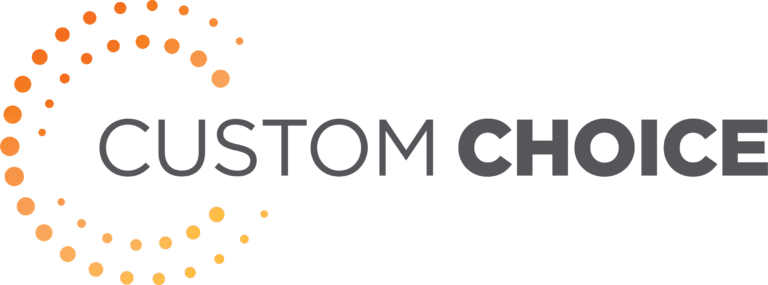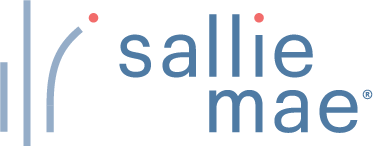Our goal is to give you the tools and confidence you need to improve your finances. Although we receive compensation from our partner lenders, whom we will always identify, all opinions are our own. Credible Operations, Inc. NMLS # 1681276, is referred to here as "Credible."
Many families can’t afford to pay for college entirely out of pocket — this is where student loans can really come in handy. Applying for student loans is easier today than it’s ever been before thanks to most student loan applications and the approval and financing processes taking place digitally. This approach makes it quick and easy to get a student loan online.
Here’s how to apply for both federal student loans and private student loans online.
Loans available online
Because most student loan applications (if not all) are online these days, it’s super easy to apply and get college aid online for both in-person and online classes. Students can choose to apply for both federal student loans and private student loans.
With federal student loans, you just have to fill out one single application (known as the Free Application for Federal Student Aid or FAFSA) annually to learn what types of federal loans you qualify for and how much in loan funds you’ll receive.
For private student loans, you can apply with as many different lenders as you would like and can then compare the different offers you receive to see which one is the best deal.
Check Out: How to Apply for Student Loans
FAFSA and federal aid
Federal student loans are funded by the U.S. Department of Education and come with unique benefits that private lenders don’t offer, such as income-driven repayment plans, student loan forgiveness programs, forbearance, and deferment opportunities.
To qualify for federal student loans, students have to fill out the FAFSA. You’ll need to provide certain information about your financial situation and your family’s finances in order to qualify for this form of federal aid. After you fill out the FAFSA, you’ll also find out if you qualify for any grants, scholarships, or work-study programs.
To complete the online FAFSA, students have to provide the following information:
- Name
- Date of birth
- Address
- Social Security number
- Driver’s license number
- Federal tax returns
- Federal student aid PIN number
- Name of schools you’re considering attending
Benefits of federal aid
One major benefit of federal student loans is that you typically don’t have to worry about undergoing a credit check when you apply, so you won’t be punished for having bad credit or a lack of a credit history. The only federal loans that do require credit checks are Direct PLUS Loans.
Another benefit of federal student loans is that the government pays any interest that accrues on subsidized loans when the student is still enrolled in school, when their loans are in deferment, and during the six-month grace period students have after leaving school before they begin to pay their loans.
If a student takes out an unsubsidized loan (which many students turn to after maxing out the amount they can borrow with subsidized loans), then the interest does accrue on the loan while they’re in school, but they don’t have to make those payments until after they leave school.
Student Aid Report
After completing the FAFSA, students will receive a Student Aid Report that will outline how much their family is expected to contribute. All the schools they listed on their application will receive a copy of the form as well.
Then, the financial aid offices from each of those individual colleges will send the student a financial aid award letter. The letter will outline how much financial aid they can provide to the student in the form of grants and scholarships and how much in federal loan funding they qualify for.
It’s important that students carefully review these offers to see what the cost of attending each school will be. Once the student chooses the school they want to attend, they can accept the financial aid package from that school.
Four types of federal Direct Loans are available:
- Direct Subsidized Loans: Eligible undergraduate students who demonstrate financial need can qualify for a Direct Subsidized Loan.
- Direct Unsubsidized Loans: Eligibility for Direct Unsubsidized Loans is not based on financial need.
- Direct PLUS Loans: This specific loan type is designed to help parents pay for their child’s education or can provide financial support to graduate and undergraduate students. Direct PLUS Loans can be either Grad PLUS or parent PLUS loans, and they require a credit check during the application. Eligibility isn’t based on financial need.
- Grad PLUS loans: This form of Direct PLUS Loans is for graduate and professional students who are enrolled at least half-time at an eligible school in a program that leads to a graduate or professional degree or certificate.
- Parent PLUS loans: This Direct PLUS Loan is designed to assist parents who want to pay for their child’s education.
Learn More: How to Get College Loans for Adults
Private student loans
You also have the option to apply for private student loans online. Generally, private student loans are borrowers’ second choice, as they tend to have higher interest rates and fees than federal student loans do. Private student loans also don’t come with federal protections like loan forgiveness and income-driven repayment plans because they come from private lenders, not the federal government.
Once someone takes out federal student loans, they may still need to borrow more money to cover the costs of their education, and this is where private student loans can be useful.
Because private student loans do tend to come with higher interest rates, it’s important to carefully calculate the amount you need before applying for them. The more money you borrow, the more you’ll pay in interest, so you don’t want to borrow more money than you actually need to.
Credible lets you compare private student loan rates from multiple lenders, all in one place.
The companies in the table below are Credible’s approved partner lenders. Whether you’re the borrower or cosigner, Credible makes it easy to compare rates from multiple private student loan providers without affecting your credit score.
The companies in the table below are Credible’s approved partner lenders. Whether you’re the borrower or cosigner, Credible makes it easy to compare rates from multiple private student loan providers without affecting your credit score.
| Lender | Fixed Rates From (APR) | Variable Rates From (APR) |
|---|---|---|
 | 3.69%+10 | 5.66%+10 |
|
||
 | 3.99%+1 | 5.5%+ |
|
||
 |
3.59%+2,3
| 5.34%+2,3 |
|
||
 | 4.24%+ | 4.97%+ |
|
||
 | 4.8%+8 | 7.77%+8 |
|
||
 | 5.75%+ | N/A |
|
||
 | 3.490%9 - 15.49%9 | 5.04%9 - 15.210%9 |
|
||
Lowest APRs reflect autopay, loyalty, and interest-only repayment discounts where available. Prequalified rates are not an offer of credit. | 10Ascent Disclosures | 1Citizens Bank Disclosures | 2,3College Ave Disclosures | 11Custom Choice Disclosures | 7EDvestinU Disclosures | 8INvestEd Disclosures | 9Sallie Mae Disclosures |
||
Qualifying for private student loans with a cosigner
It can be harder to qualify for private student loans than federal student loans, as they require a credit check and tend to only offer loans with favorable interest rates to borrowers with good credit scores. If you struggle to qualify for private student loans due to a lack of a credit score or a bad credit score, you can apply with a cosigner who has a good credit score (like a parent).
Having a cosigner can make it easier to qualify for a loan and to receive a lower interest rate. Be careful here, though — when you have a cosigner, both of you are responsible for making payments to the loan. If you fail to make your payments on time, your cosigner’s credit score can suffer.
Shop around for different lenders for a lower interest rate
Another way to get lower interest rates is to shop around with different lenders. With federal loans, you only have to complete the FAFSA once annually to learn about your federal options for that school year. For private lenders, you need to apply with each individual lender to see what loan amounts, interest rates, and terms each is willing to offer you. Compare these loan offers carefully to see who can offer you the best deal.
When applying for multiple loans, try to get pre-approved before you submit your official application. Pre-approvals lead to a soft credit check instead of a hard one, so your credit score won’t be harmed when you go through the pre-approval process.
When you are pre-approved for a loan, you can get a general idea of the rates and terms you’re likely to qualify for once you officially apply, but the offer can change once the lender verifies your income, credit history, and a handful of other factors.
- Name
- Contact information
- Driver’s license number
- Social Security number
- Gross monthly income
- One most recent pay stub
- Employer information
- Monthly rent or mortgage payments
- Anticipated graduation date
- Desired loan amount
- Loan period
- Cosigner name and contact information
- Reference name and contact information
- Name of school you will be attending
It’s worth noting that private student loan lenders can ask you to provide documentation that verifies any information you gave them.
Once you’re approved for a private student loan, you can choose to accept it or not. After you officially accept the loan, the lender usually sends the funds directly to your school. If you applied for enough money to cover other expenses aside from tuition (such as books, parking, and living expenses), you can contact your financial aid office to learn more about how they disburse those funds to you.




